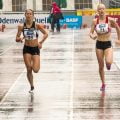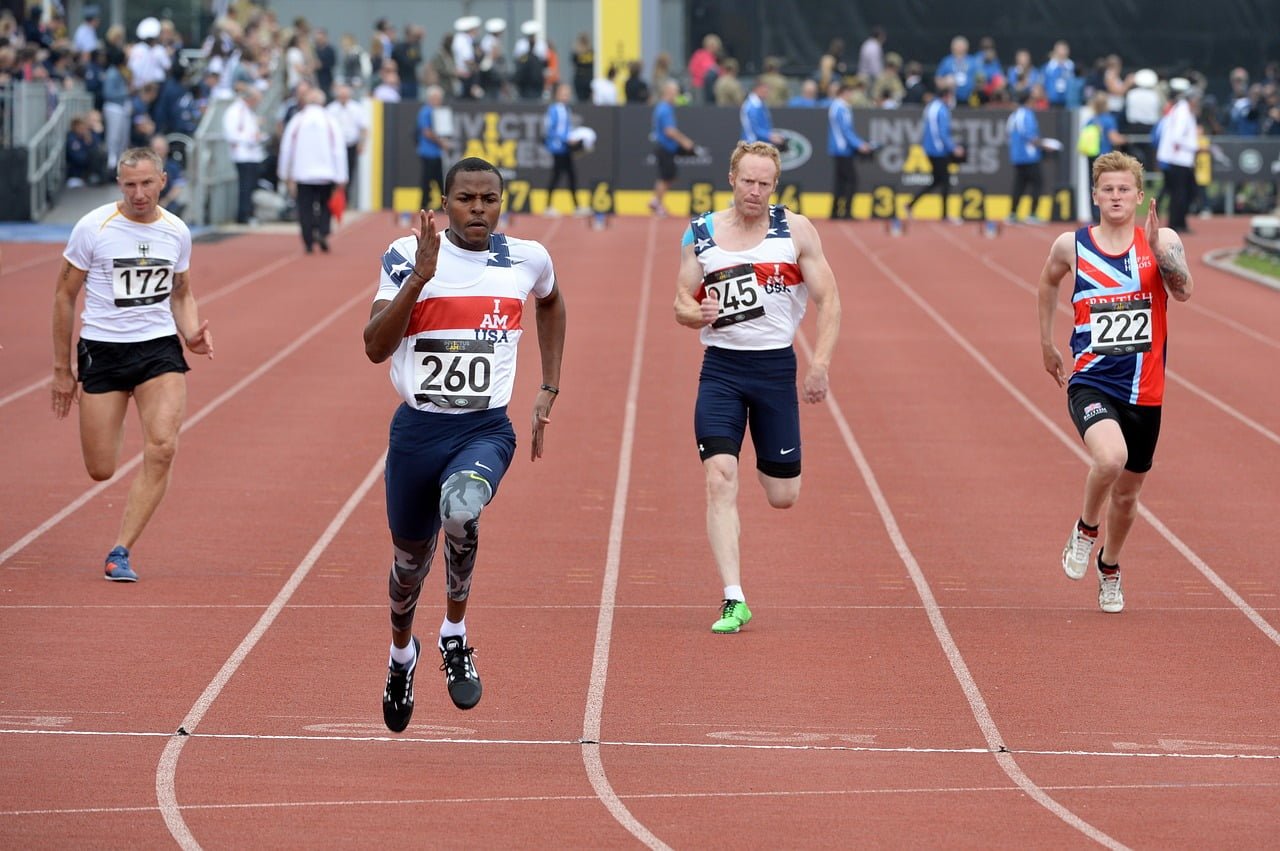Ask any runner and they will tell you that there is nothing quite like the feeling of pushing yourself until your lungs burn and your legs are about to give about. If you are a runner, it’s about love. Being out there with your shoes pounding the pavement and nothing but your mind to keep you company is a wondrous feeling, one that is almost meditative.
Running is one of the most effective exercises for weight loss, health and general cardiovascular fitness. Nearly anyone can do it, it requires little to no equipment, and you can take it to whatever level you wish. Sounds great, right? But for a lot of people, that also sounds out of reach. How can runners be so addicted to an activity that many find either boring or way too physically strenuous to even enjoy? The answer lies in your approach.
Start (Running) Slow
It’s easy to forget that we all start as beginners. Especially when we are overweight or out of shape, starting can seem like an insurmountable task. The love of running can be there, but if you don’t have the physical conditioning, it can get very difficult and discouraging to meet your running-related goals.
So let’s take this like a nice morning jog: start slow, know where you’re going and how you will get there, and don’t get too focused on the little details. Enjoy your journey at every stage and you will be on the fast track to using running to lose weight, get in better physical shape and improve your heart health.
Below, we’ll cover all your burning questions on how to get started running, how to make the most of your training, and most importantly, how to make running a habit and keep going ‘til you see the results you want.
How To Start Running #1: Getting Started
Sedentary Individuals
If you are very overweight or new to exercise in general, you should start with daily walking and developing a habit of regular exercise. You should spend a few weeks doing some other form of cardiovascular exercise such as cycling, using an elliptical or swimming 30 minutes a day 4-5 days per week before you are ready to start running. It is important to build a base of cardiovascular ability and muscle strength before you try running.
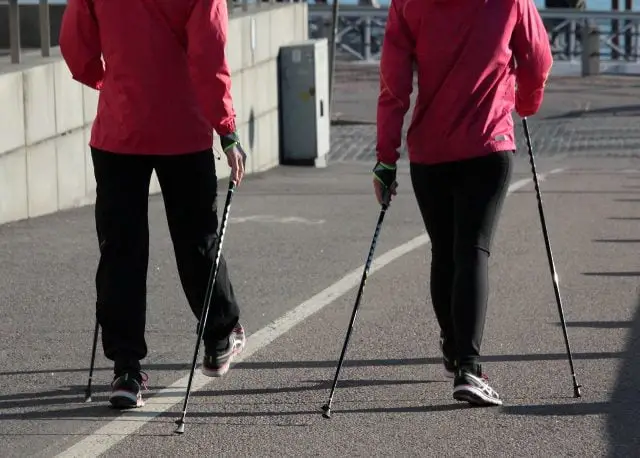
If you are very overweight or new to exercise in general, you should start with daily walking.
Lightly Active Individuals
If you are already in the habit of regular exercise, adding running to your routine will be a relatively easy transition. It’s tempting to just go out and run as fast and as far as you can, but this is a quick road to injury and imbalances.
Going too far, too fast is the most common cause of many injuries such as IT band syndrome, shin splints and patellar tendonitis (commonly called runner’s knee). These types of injuries can put you out of commission for a long time and stall your progress, or even set you back as you generally cannot do too many other types of workouts with knee and hip pain.
You’ll be able to run longer and at a steadier pace by starting more slowly and doing intervals of walking, slow jogging, and running. The idea is to gradually increase the amount of time you spend running so that you can continue to run and do not get burnt out, physically or mentally.
How To Start Running #2: Progression After Gaining Momentum
Start by adding one minute of jogging for every four minutes of walking, and gradually increasing the running time until you are at about a 2:1 ratio of running to walking.
I recommend increasing the time by no more than 10% each week. You can go more slowly if you wish, but it is not a great idea to go more quickly.
For beginners, or those that are overweight or very out of shape, I generally recommend avoiding running two days in a row. Seasoned runners will often run 2 or 3 days in a row, changing from slower paced distance goals to speed goals or hills, but even then, the most seasoned runners try to give their bodies the rest required to perform as well as possible and you should, too.
On your off days, do something that doesn’t tax the same muscles you use when running, such as cycling or weight lifting. Cycling works the hamstrings (back of the leg) comparatively more than running. These are muscles not actively recruited when running, but very useful for improved performance and preventing imbalances that lead to injury.
Building your upper body helps to propel you forward, so doing some upper body resistance work the day following a difficult or long run can do double-duty as both rest and cross-training.
How To Start Running #3: Initial Soreness and Muscle Aches
Some soreness and muscle aches are to be expected, especially in the quadriceps and calves, any time you push further than you are used to. But these pains tend to be minor, dull pains that you will generally warm out of with a good warm-up and several minutes of easy pace jogging.
Sharp or sudden pains, or pains that persist or get worse as you exercise are your body’s way of telling you something is wrong and they should not be ignored.
Pain that is much worse on one side of your body can be a sign that one of your legs is much stronger than the other or that you are striking incorrectly.
If these things happen, take 2-3 days off and see a doctor. If imbalances are severe and pain is persistent, you may want to see an orthopedist to correct this prior to starting a running program.
How To Start Running #4: Overcoming Embarrassment
Many people just starting a running habit, especially if they are overweight or out of shape, feel embarrassed about running in public. Here are some easy mental tricks to get over this roadblock
- Get a buddy or run with a group. You can find a beginners running group or start your own on meetup.com, or any similar website. Even established running groups are very welcoming and inclusive, so don’t be afraid to go out with more experienced runners. They can, and are usually very willing to, teach you a ton. There are many more beginners out there than you think, and even more people who are in the same shoes of being too embarrassed to start running because of what other people will think. Band together and support each other through the awkward first steps.
- Run at less busy times of day. Very early in the morning before the sun is up, or very late at night after the sun goes down are the best times go out for a nice long run. The weather is cooler, there is no chance of sunburn, and even less chance someone will see you. Just make sure to be aware of traffic. Sometimes not being seen is a bad thing! Midday on weekdays if you have the time is also a good time, as there is just not as much road traffic. Just be mindful of wearing sunblock when you go outside and staying hydrated.
- Remember that most people won’t notice you. The fact of the matter is that most people are so wrapped up in their own lives, they will not even see you run by. And if they do, they likely are not thinking negatively about you, they are likely still thinking about themselves. Same goes for the few people who will say rude things to you from a car window or on the road as you run past. These people aren’t reacting to you, they are reacting to their own feelings about themselves. Let them be and see the next tip.
- Remind yourself how awesome you are. When you start to feel anxiety, repeat to yourself how amazing it is that you got out for a run today. Develop a personal mantra even if it is simply “I can do this”

How To Start Running #5: Finding the Right Venue for Your Training
Finding the right route for you is a highly personal choice. It is important that you feel safe and comfortable.
Running on a Treadmill
Treadmills offer a more forgiving alternative to road running, because they tend to be more cushioned than pavement and allow you to get a run in any weather, at any time of day or night. However, they are less than ideal in that you don’t need to propel yourself forward as much. This forward-pushing motion is necessary for development of the quadriceps muscle (the front of your thigh) and calves, and many treadmill runners find themselves much less able and much weaker when they do go out onto the track or the road. For that reason, if you are training for your first race, make sure you do at least some outside running to prepare for the realistic conditions under which you will be competing.
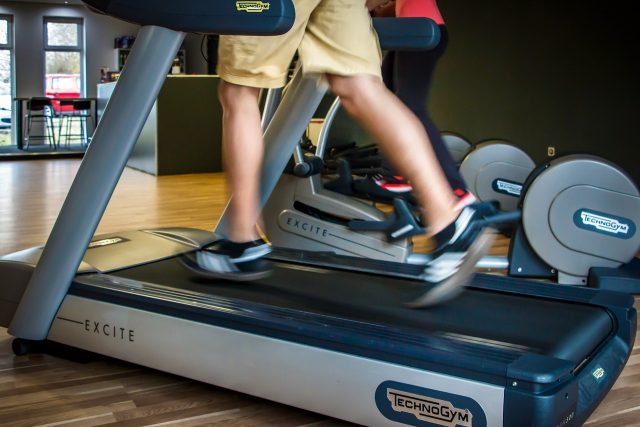
Running on a Track
A track is ideal for beginners in that they are flat and free of traffic, while still being outdoors and simulating true conditions as closely as possible. Most tracks are 400meters (4 laps is 1mile) so it is easy to track your distance and many school tracks are open to the public when not in use. The downside of both treadmills and tracks is that they can get very repetitive. One of the great joys of running is taking in the scenery, breathing in the fresh air, and taking in the sights around you. When driving, you hardly notice many things, even in your own neighborhood, that can be fascinating. There could be a pond with hatchling ducks in it near your home, or a really interesting side-street with cool shops. You never know what you will see. If you can walk straight out your front door and go for a jog around your block, that’s great, but always make sure you feel safe and the route is well lit with minimal traffic.
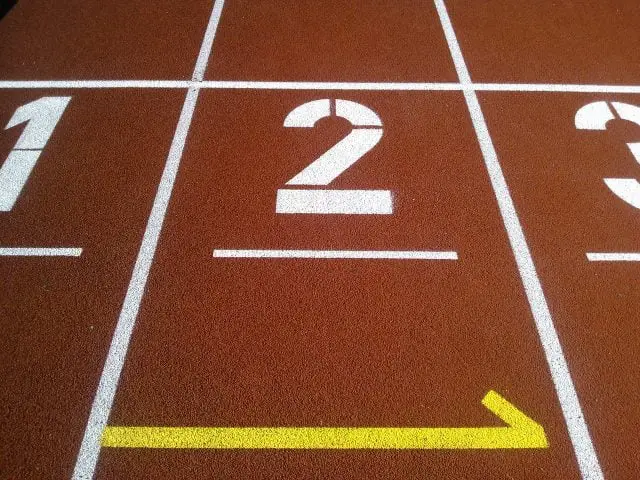
Required Equipment
Footwear
You don’t need anything fancy to start running, but a good pair of shoes is one of those things that you should not go without. It goes without saying that running is a high impact sport and lack of proper arch support can lead to some of the worst injuries, so start with the right shoes.
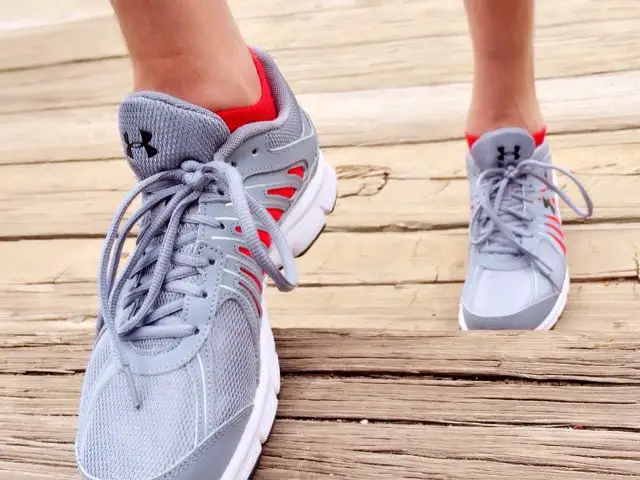
A good pair of shoes is one of those things that you should not go without.
I would say ignore fashion and price, but with so many different types of shoes on the market, you can easily find a shoe that appeals to all of your goals they can look good, be at a good price point and offer the proper support. Go to a specialty running store and get a fitting done. Try on multiple types of shoes before deciding on one to buy. The type of gait you have, your foot anatomy, as well as the kind of running you want to do will all impact the type of shoes you buy.
Fitness Apparel
Almost any clothes will do, but the best type is made of technical fabric that wicks away moisture. This is another point where fashion and price shouldn’t matter, because there are 100s of places you can get clothes like these, including outlet and discount stores where the price point is excellent. Wear something comfortable, but not so loose that it falls off you.
Innerwear
If you are a woman, you will also need a good supportive sports bra. Regular bras just won’t cut it in this case. You want something that doesn’t constrict your ability to breathe, but does firmly hold you in place. There is little more painful and distracting that bouncing around in your bra during a run.
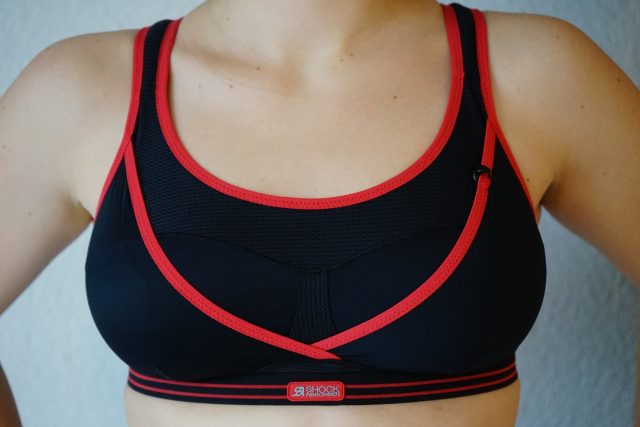
A supportive sports bra is essential for women when running
How To Start Running #6: Running Form
There are many minor adjustments in form that can make running more comfortable and make you perform better. But, for now, focus on taking short strides and striking the ground with your midfoot and rolling onto your heel (that is, not running on your tip-toes or coming down full force on our heel).
Keep your elbows flexed and your hands relaxed. It helps if you envision holding something between your thumb and forefinger like a potatochip or something delicate. Avoid looking at your feet and, instead, look straight ahead at the horizon, or if you are trail running, look at the next 6 feet or so on the floor in front of you to avoid tripping over branches and rocks.
How To Start Running #7: Breathing
Breathing is the most important aspect of running. Many runners develop a pattern of breathing where they inhale for two (or three) footstrikes and exhale for two (or three) footstrikes, keeping the breathing even with each stride.
Breathe in and out through your mouth in a controlled way. You can also recruit your nose, but this is a more advanced breathing technique that we can work on at another time.
To make the most of your breathing, try what is called “belly breathing”, which recruits your diaphragm and keeps your chest mostly still, allowing you to take in more oxygen with every breath. Learn this technique by practicing using your belly to breathe while lying in bed or on the floor. Breathe in and expand your belly, trying to keep your chest as still as possible. Then exhale slowly, allowing your abdomen to fall. Contract your abdominal muscles and try to hold the tension on inhale as well as exhale.
How To Start Running #8: Fatigue Management
Running is good for your joints (when done in moderation and with mindfulness) and your heart. But I don’t want you to force yourself through a jog that you hate every morning because you think it’s the only way to lose weight. I want you to fall in love with running. When you can achieve that, it will stop seeming like a slow slog to knock off the pounds and the fat will fall off on its own while you practice your new favorite hobby.
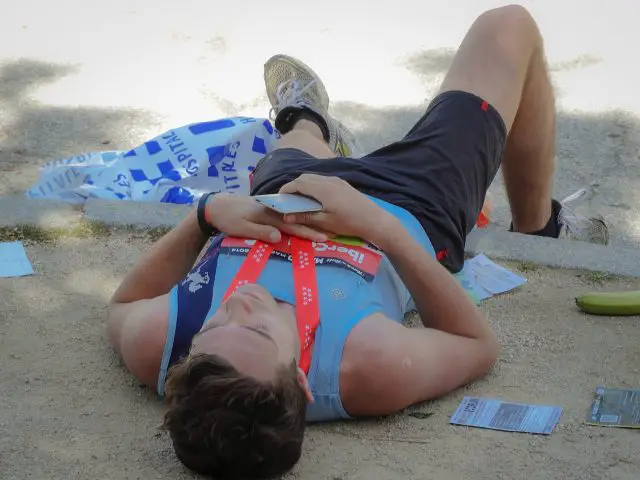
Training should always be fun. Let’s be honest, though, running the same route every day or running facing a well or a group of TVs on the treadmill can get incredibly repetitive and boring. No wonder so many people hate it. Here are some tips for motivation and how to keep going when your routine becomes stagnant.
- Music– An energizing mix of music you can get lost in is the key to a good running workout. The night before, pick out some of your favorite up-tempo jams that will get you in a jogging mood and mix them into a playlist for your morning run. Some favorites of mine are Queen and Michael Jackson
- Change it up. If you are not on a set training plan to run a race, just going out and running by feel daily can get boring. Change up your routine by running your usual route backwards. You can build a whole strength and cardio workout by stopping periodically along a running route (while staying safe, of course) to do some strength exercises. For example, you can run ¼ mile and then stop and do some dips off a bench, pushups, air squats and lunges, then run another ¼ mile. If you repeat this circuit 4 times, you will have run a mile and gotten some resistance training in during your rest periods
- Get a buddy. As I have mentioned, runners, on the whole, tend to be a very supportive and inclusive group. Join a group run in your town or grab a friend and make it a social activity. Get coffee or breakfast afterwards and talk about the best parts of the workout.
- Sign up for a race. You don’t need to win to have fun. There are tons of options from 5km fun runs with obstacle courses and bubbles to half-marathons you can run in costume. Look online for races in your area and sign yourself up. Set a goal for that race and start a training plan. Working towards a specific goal will really light a fire under you!
- Apps. In the age of smartphones there are so many apps that can add a whole new and exciting aspect to your run. The best running apps have a way to mark distance and time as well as a way to log previous runs and compare your performance as time goes on
For those just getting started can get a solid training plan from the Couch to 5k app. It can really light a fire under you to continue progressing after you have started to run. There is even a progression to 10k when you’re ready.
If you like listening to a story, the Zombies, Run! App integrates running with a captivating story of the Zombie Apocalypse that currently spans 5 seasons. You go on missions; collecting supplies and intel to save people from the zombie virus. There are even interspersed zombie-chases to add a little excitement to your run and a mode where you can listen to the township’s radio station talk about anything from survival tips and town news to your latest adventures as one of the town’s runners. The base app is free, but the paid version allows you to build up your township and has many different training plans for interval training as well as building up to a 5k, 10k or half marathon distance.
There are many others used for logging runs and connecting with others to share and compete against people in your area that may run on the same routes. Map My Run and Strava are some of the most popular with these features. All the apps I have listed are available on Android as well as iOS.
Running for Weight Loss
There are endless benefits to running. Getting outside and smelling the air, filling you full of endorphins and feel-good hormones and neurotransmitters like norepinephrine, dopamine and serotonin that have been shown to reduce depression are just a few of them.
Running can be a very effective weight loss tool if utilized correctly. That is, in conjuction with proper diet and some resistance training.

Running can help you lose weight.
Many of the changes that happen when you start running won’t be immediately visible. In fact, you may hit a plateau in weight loss or gain a few pounds due to water retention in sore muscles. That’s ok, the weight loss will come with time, patience and being consistent.
The immediate benefits are a stronger heart, better oxygen carrying capacity, increased bone strength, and you can’t forget that feeling of bliss after a good run.
Don’t Give Up!
There will be good days, but there will also be days when you can’t seem to reach distances or times you did just the previous workout or the one prior. And there will be times that it feels really hard to even get up and go.
The important thing is that you listen to your body, take rest when needed, and lace up and try again on your next run. One single day did not make you, and one bad run cannot break you. In that way, running teaches us the most important of life’s lessons- dedication and persistence.



